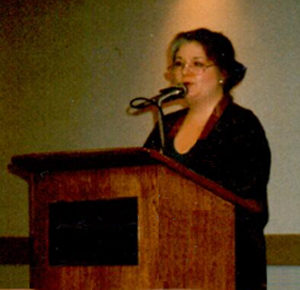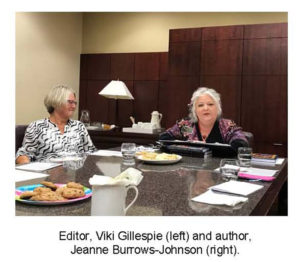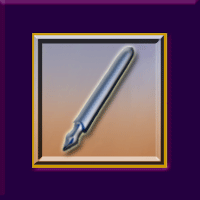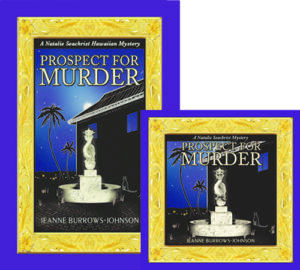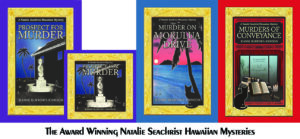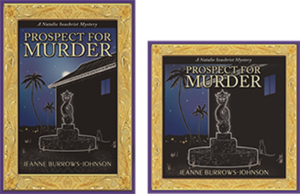WHO NEEDS A POWERFUL BIO?
With 2019 quickly unfolding, authors and artists face a multitude of challenges and opportunities. Beyond financial planning and tax preparation, this is the ideal time to strategize and schedule events, design and/or revise our websites and social media outreach, and shape marketing materials to support these endeavors. While professional service providers can address many of these issues, there are expenditures that can be avoided if we are able to do some of the work ourselves. The essential question is whether we possess the skills and artistic vision to do so…as well as the time that will be required. Fortunately, like book synopses, several elements of biographies can be utilized repeatedly. Your picture, logos and slogans, descriptions of your work, and biographies of varying lengths and emphasis will all prove useful eventually. Today, I will suggest requisite elements of effective biographies.
WHEN WILL YOU NEED AN EMPOWERING BIOGRAPHY?
You are invited to view points raised in a humorous discussion of the need for biographies at imaginingswordpower.com/bios-to-empower-you.html. The gist of the piece is that everyone, both in and out of public view, has a need for one or more biographies…ranging from single sentences of self-introduction, to paragraphs for professional publications, and even a lengthy eulogy that will enumerate key aspects in one’s life.
WHERE TO BEGIN SHAPING YOUR BIOGRAPHY
By reviewing hardcopy and electronic files that contain materials addressing your life and work, you can gather facts, as well as previous stylistic choices from which you can draw. In addition, I suggest you create files of bios that have impressed you. These can include materials from colleagues and co-authors, as well as the brochures of professionals whose offices you visit.
Regardless of whether you work on a computer, or with pen and paper, begin listing words, phrases and other verbal images that you find attractive and worthy of positive public attention. At this point, do not be concerned about the length of your notes, their chronology, or even the vocabulary you are utilizing. For example, if you were writing a physical description of yourself, you might begin with the basics of hair and eye color with simple words like “brown” and “black.” You can add interest later by replacing “brown” with more dynamic words like coffee, chestnut, or charcoal.
IS THERE AN IDEAL LENGTH FOR A BIOGRAPHY?
If you are a professional, you will interact with colleagues and the general public in differing ways. Each time you are required to produce a new bio, you will face varying requirements in length and style.
~ A casual meeting or elevator speech requires a single sentence of self-introduction in a first-person voice
~ Casual reference by another person requires similar length, but should be written in a third-person voice
~ Your brief self-introduction, should be about three sentences in a first-person voice
~ A brief introduction by another person requires similar length, but should be written in a third-person voice
~ Detailed self-intros often range from a paragraph to a page, written in a first-person voice
~ Complex intros that are to be delivered by someone else should be similar in length, written in a third-person voice
~ Anything longer can be used for slow elevators or tall buildings
BIOGRAPHY ELEMENTS
Regardless of usage, I recommend you utilize verbiage that expresses your personality, as well as the products or services you offer. This allows readers or listeners of your promotional materials [especially prior to an event] to feel they have actually met you. You should consider including the following.
~ Education and training
~ Career highlights and focus of work
~ Professional accreditation and affiliations
~ Photographs are optional and may be appropriate to only some uses. Authors can be photographed holding one of their books and artists may wish to show a sample of their art. Head and bust shots, as well as images of you standing on a stage or at a podium will all prove useful someday. If you have action shots featuring other people, you should obtain a signed release from them.
BIOGRAPHY LAYOUTS
Biographical layouts vary with length and purpose. To maximize harmony with other promotional materials, your biography should utilize elements from your style sheet with your signature font[s], colors, logos, slogans, etc.!
USAGE OF BIOGRAPHIES
Once you have created biographies of varying length and style, you can utilize them in numerous places. Bios can be placed in several places on the internet, including: One or more pages of your website[s], your blog; Facebook and other social media sites; a framed copy can face visitors to your office or studio.
I send copies of appropriate bios to organizers of public speaking engagements twice; once when arrangements have been confirmed, and just prior to the event. I also carry copies to the event in case the host does not have one. Depending on the purpose of the engagement, the bio/intro may be short or long. If short, I print it on cardstock, as well as 8.5 x 11- inch stationery. I also carry a copy with bulleted key points in a non-glare archival quality sleeve in my presentation folder…for those unexpected occasions when I end up having to introduce myself. [With bulleted data, I can choose to add or delete points that I may decide are, or are not, appropriate to the day’s audience.]
FYI: I recently received a call from a radio personality wanting to interview me. For a mere $125 per quarter of an hour, I can be featured on a drive-time radio show…This has reminded me of other [free] opportunities I have had. Not only am I glad to have varied bios at the ready for those I choose to pursue, but I’m thinking about preparing a series of questions that I might want an interviewer to ask…
Wishing you the best in your creative endeavors,
Jeanne Burrows-Johnson, author, consultant, and motivational speaker
To learn more about the award-winning Natalie Seachrist Hawaiian Mysteries, including Murders of Conveyance [Winner, Fiction Adventure-Drama, 2019 New Mexico-Arizona Book Awards] and other projects, please drop in at my author’s website JeanneBurrows-Johnson.com. You’ll even find Island Recipes that might inspire your culinary creativity.
For more ideas to strengthen your Wordpower© and branding, please visit: Imaginings Wordpower and Design Consultation.
Follow Me:
Amazon, Arizona Authors Association, Apple Books
Audible, Authors Den, Barnes and Noble, Blogarama, Book Bub
Cozy Mysteries-Unlimited, Facebook, Good Reads, Hometown Reads
Book sellers may contact book distributors such as:
Baker & Taylor, Follett, IPG, Ingram, Mackin, Midpoint, TitleWave



